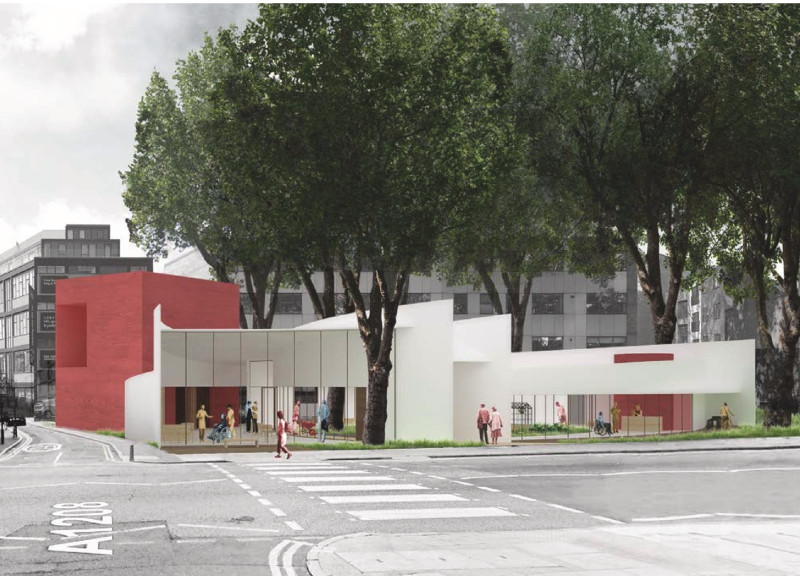5 key facts about this project
The Centre for Living & Dying Well (CfLDW) is designed to address the sensitive topic of death in a way that promotes openness and community engagement. Set in an urban area with an under-used green space, it offers a fresh perspective on hospice care, encouraging a connection between the hospice and the everyday lives of local residents. The overall design focuses on creating an inviting atmosphere that facilitates interaction and supports conversations about mortality.
Design Concept
The vision behind the Centre centers on the importance of community spaces in hospice care. A central garden forms the heart of the design, providing both a tranquil retreat for patients and a gathering place for families and friends. This garden is thoughtfully placed to promote interactions between users, seamlessly linking the hospice to the surrounding neighborhood. Surrounding the garden are a variety of spaces that offer different levels of privacy. These areas serve distinct functions, such as private consultations and open community events, allowing people to engage in meaningful ways.
Material Selection
Material choices play a significant role in the Centre's construction. Wood particle materials and lightweight resin-impregnated carbon fiber reinforced concrete have been selected for their strength and ability to create a warm, comfortable environment. These materials are intended to meet the structural requirements while fostering a comforting atmosphere. The combination of practical and aesthetic considerations supports the Centre’s mission of providing a peaceful space for end-of-life care.
Programmatic Integration
The Centre integrates a range of programmatic elements to benefit both patients receiving hospice care and the wider community. Educational spaces and areas for community classes are incorporated into the design, highlighting that the Centre is more than just a place for dying. It focuses on the living and aims to foster public dialogue about life's important moments. This approach encourages understanding and support within the community, moving beyond traditional views of death and dying.
A noteworthy design detail is the use of large glass walls that open up to the garden. This creates a strong connection between indoor spaces and the outdoors, allowing natural light to illuminate the interiors. The garden becomes part of the experience, promoting a sense of peace and connection with nature, which is essential for both reflection and social interaction.


















































